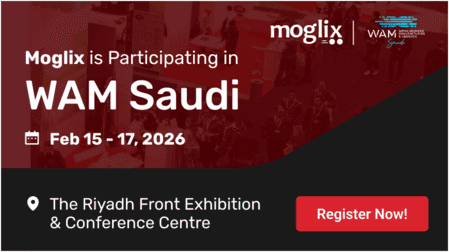4 Steps for CEOs to Mitigate Supply Chain Risks
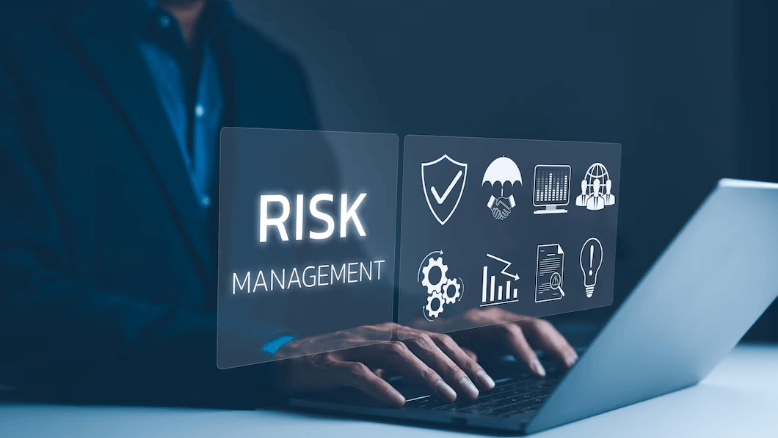
4 Steps for CEOs to Mitigate Supply Chain Risks
You could be a CEO, a procurement officer, or a supply chain manager playing a crucial role in ensuring that every product reaches its destination smoothly and efficiently.
Yet, in the last decade many organizations were caught off guard by supply chain disruptions that resulted in billions in recalls across industries like pharmaceuticals, electronics, automotive etc.
These disruptions also resulted in delays and incomplete deliveries, because of which industry-wide OTIF rates have suffered, further straining customer relationships and operational efficiency.
CEOs now know that they can’t afford not to prepare for a potential disruption. The key is to build resilience now, not after the next crisis hits. Here’s how:
Understand Your Supply Chain Risks
Known Supply Chain Risks: These are predictable and manageable, such as the risk of a supplier going bankrupt, which can be determined by looking at their financial situation.
Cybersecurity threats can also be quantified using advanced systems that analyze IT infrastructures.
Unknown supply chain risks: These are wild card events that are random, highly improbable events that have enormous impact.
Mathematician and philosopher Nassim Nicholas Taleb termed such events as “black swan” events.
A surprise natural calamity or an undiscovered cybersecurity risk might impair your supply chain. While predicting them is difficult, you may mitigate their impact by instilling a culture of alert and preparedness.
Build a Risk-Monitoring Operation
Invest in advanced supplier risk management. Create a team equipped with AI-powered tools to monitor risks across your entire supply chain, from direct suppliers to the deepest tiers.
Consider risks from operational, financial, and geopolitical angles. Use data to track key risk indicators (KRIs) and plot these risks on a matrix to guide your response.
Simplify Your Product Portfolio
In our quest to meet every consumer’s desire, we’ve overcomplicated our product lines. It’s time to streamline. Simplify designs, standardize components, and reduce the number of suppliers.
This not only cuts costs but also minimizes risk. Moreover, reducing product complexity can alleviate working capital crunch by lowering inventory levels and decreasing overhead costs.
Take Control of Your Supply Chain
Reevaluate your make-or-buy strategies. Invest in digital technologies like 3D printing. Consider reshoring or near-shoring manufacturing to reduce dependencies.
Follow Tesla’s lead—design and make critical components in-house to ensure supply chain integrity. Strengthen financial resilience to withstand credit crunch situations by maintaining a healthy balance sheet and diversified funding sources.
Are You Prepared for the Next Crisis?
Preparing for the next crisis might seem daunting, but it’s essential. The CEOs who act now will not just survive—they’ll thrive in a post-crisis world.
Global supply chains and their inherent risks are here to stay. By embracing proactive risk management and fostering a culture of resilience, we can turn challenges into opportunities for innovation and growth.
Moglix has been, for almost a decade, working with organizations to mitigate the supply chain risks in India and the UAE.
With our integrated procurement SaaS Solution, working capital solutions, catalog-based buying solutions, prequalified 20K+supplier base combined with ever evolving state-of-the-art physical warehouse network we have been helping organizations to build start building long-term resilience into their supply chain.
Why Are CPOs Increasingly Looking to the Cost-to-Serve Model to Enable Profitable Growth?
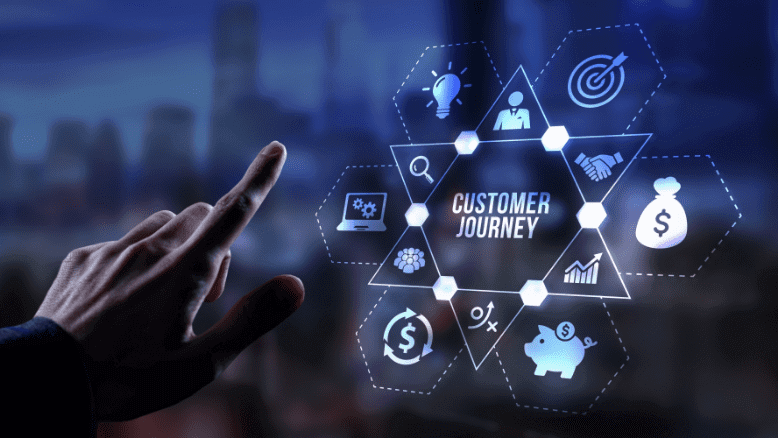
Why Are CPOs Increasingly Looking to the Cost-to-Serve Model to Enable Profitable Growth?
We are living in a disrupted globalized world and as a Chief Procurement Officer (CPO) managing a profitable procurement department, you’re navigating through numerous supply chain disruptions over the past five years.
Events such as Covid-19, the Ukraine War, the Suez Canal blockage, and the recent Israel-Hamas conflict have posed significant challenges for businesses, impacting their financial health. Cutting costs remains more crucial than ever, but it’s also more complex.
Traditionally, supply chain management focused on total landed costs to calculate the overall expenses of making a product.
However, this approach is now recognized as inadequate.
Costs go beyond just warehouses—they affect everything from delivering goods to customers, which can greatly influence profitability.
While companies used to prioritize reducing procurement costs, there’s now a growing awareness of the need to take a broader view.
Understanding costs in detail is essential to ensure that increased sales translate into higher profits.
To achieve this, businesses need a thorough understanding of their supply chain and how it serves their customers. This is where cost-to-serve analysis becomes invaluable
What is the Cost-to-Serve Model?
The Cost to Serve model is basically a way of figuring out all the costs involved in getting products or services to customers.
It’s not just about the obvious costs like making and delivering stuff.
It also covers things like marketing, sales, customer service, and other behind-the-scenes expenses.
This method helps businesses plan their finances better and make smarter decisions.
When companies use Cost to Serve models well, they can really see how profitable each product, customer, sales channel, and market segment is.
This helps them decide on prices, what products to offer, which customers to focus on, and where to put their resources.
The Cost-to-Serve model is built on the foundation of digital transformation, leveraging advanced technologies to cover every aspect of the supply chain journey.
This includes procurement, manufacturing, distribution, and customer service.
By integrating these elements, the model ensures that all cost drivers are accounted for, providing a clear picture of the true cost of servicing each customer or market segment.
Why Does the Cost-to-Serve Model Make sense?
Enhanced Visibility and Control
The Cost-to-Serve model offers enhanced visibility into the cost structure of the supply chain.
Granular insight allows CPOs to identify high-cost areas and implement targeted strategies to reduce expenses.
With a clear understanding of cost drivers, businesses can better control their spending and improve profitability.
Data-Driven Decision Making
By leveraging detailed cost data, the Cost-to-Serve model enables CPOs to make informed decisions about resource allocation.
For instance, identifying the most profitable customer segments allows companies to focus their efforts on high-margin areas, optimizing overall profitability.
Customer-Centric Strategies
Understanding the costs associated with the entire customer journey allows companies to tailor their services to meet customer needs more effectively.
This customer-centric approach enhances satisfaction and ensures that services are delivered cost-efficiently, contributing to profitable growth.
Leveraging Digital Transformation and SaaS Solutions
Digital transformation plays a pivotal role in the successful implementation of the cost-to-serve model.
Modern البرمدة كخدمة (Software as a Service) solutions provide the advanced analytics and real-time data processing capabilities necessary for accurate cost-to-serve analysis.
These platforms automate many aspects of the supply chain journey, reducing manual effort and minimizing errors.
Data can make or break a Cost to Serve initiative
Data Sanity
Getting the data right is crucial and hence the more detailed and specific the cost data, the better the Cost-to-Serve model will be at giving insights.
A common misconception floating around is that basic data like order numbers, order details, quantities per order, picking methods, shipping types, and costs would be straightforward.
But as per the findings of a study, even in big companies with advanced ERP systems, getting good data sets is tough and often inconsistent.
Data Updates
The Cost-to-Serve model becomes more dynamic and responsive with frequent and timely data updates.
With constant changes, it’s crucial for end-users to have up-to-date information available precisely when decisions need to be made.
Updates too soon and too frequent would be impractical.
Data Integration
For a cost-to-serve model to pack a punch there needs to be a central data warehouse or an intelligent SaaS product like Moglix that can pull relevant data from multiple sources like WMS (warehouse management system), CRM (customer relationship management), and TMS (transportation management system).
Knowing exactly where the data lives and collaborating closely with end-users to figure out what’s essential for the model to guide decision-making effectively.
What do we know? What have we learnt?
The Cost to Serve model empowers supply chain leaders with timely insights to make informed decisions.
By providing a holistic view of the entire supply chain, this approach prevents unforeseen pitfalls that can disrupt profitability and team morale.
It’s about sticking to basics, staying proactive and maintaining a clear path towards sustainable success in a dynamic business environment.
Moglix for almost a decade now has been enabling organizations in India and in the UAE to achieve end to end procurement & supply chain efficiency.
Its integrated procurement البرمدة كخدمة solution, automated workflows, and catalog-based buying solutions, combines with its state-of-the-art physical warehouse network to revolutionize your business’s approach to procurement.
4 Reasons Why CIOs Are Looking Beyond ERP for Business Spend Management

4 Reasons Why CIOs Are Looking Beyond ERP for Business Spend Management
As a CIO navigating long-term transformation while juggling short-term goals, you understand how much the market has changed in just a few years.
Today, CIOs need to equip their organizations with the right tech, tools, and skills to act swiftly and harness data for immediate and lasting value creation. Balancing immediate cost cuts with future planning has become crucial.
If you can strike that balance, it’s a huge win. Business Spend Management (BSM) shines here—it’s a low-risk, cost-effective strategy that quickly benefits procurement and extends its impact across the entire business, including IT.
The primary value of BSM is that it provides an end-to-end business process across all aspects of spending.
This, in turn, empowers collaboration, improves visibility, and allows companies to move beyond some of the typical challenges that result from a siloed approach to spending.
Many organizations, of course, use their existing enterprise resource planning (ERP) systems for spend management.
Some ERP platforms offer native procure-to-pay (P2P) modules, but despite the commendable efforts of established solutions like SAP and Oracle ERP to keep up with technological advancements, they face significant challenges from emerging platforms like Moglix.
This trend is particularly noticeable in the supply chain sector, where CPOs often favor specialized tools over traditional ERP systems, even within organizations that have formally adopted ERP solutions.
Here are four reasons your ERP software falls short:
End User Adoption
CEO Spencer Fung nails it when he talks about Li & Fung’s digital makeover, highlighting that success isn’t just about technology—it’s about getting people on board with using it.
Many companies struggle with ERP systems because users resist them. ERPs are often designed for top brass and finance, leaving everyday users to maneuver and come up with patchwork.
Another challenge is ERP training, which can take a whole month—tough for supply chain managers juggling fire at multiple fronts.
Plus, the complex manual means training needs to be frequent, eating up resources and time, not to mention costs. ERP solutions often miss steps in supply chain workflows, forcing workarounds that lead to unclear reports and missing data.
And let’s not forget the sluggish and infrequent support responses, a major frustration for supply chain managers who need quick fixes from a support team that neither understands the business or the enormity of the requirement.
These issues hold back ERP use, leaving many managers stuck with outdated data.
To really take charge of your company’s resources and boost ROI, businesses need a smart add-on SaaS solution to their current ERP setup—one that’s user-friendly, so people can find what they need and get it approved easily.
This solution should simplify the procure-to-pay (P2P) process for both employees and suppliers, giving approvers real-time insights into budget impacts before they commit financially.
Success Kills Innovation
This isn’t a blanket statement, but it applies to legacy ERP systems.
They’ve been trying to keep up ever since cloud platforms emerged. To their credit, SAP and Oracle have been making efforts to adapt, releasing new cloud-based versions.
However, instead of just moving to the cloud, these legacy ERPs should have been completely rewritten.
To be fair, part of the reason they haven’t done this is because they can’t. ERPs have large, important clients who are used to the way things currently work, and making big changes can be tricky without upsetting them.
Legacy ERP systems rely on outdated technologies and architectures, limiting their ability to adapt to modern business needs and integrate with newer technologies and APIs.
Their rigid structures also make it difficult to customize or configure for unique business cases and processes.
Lacks Adaptability
ERP systems were primarily designed to handle transactional data and internal processes, focusing more on operational efficiency than on strategic functions like Business Spend Management.
As a result, they lack the specialized features needed for advanced spend analytics, indirect procurement, and real-time cost savings insights.
For instance, a retail company using an ERP system for supply chain management might face difficulties in adapting to sudden changes in supplier pricing or demand fluctuations.
Integrating new spend analytics tools or dynamic procurement processes could require extensive reconfiguration, leading to delays and increased operational costs.
This rigidity hinders the company’s ability to respond swiftly to market changes, optimize procurement, and achieve cost savings.
Deployment Cost
ERP systems can be incredibly expensive, costing millions of dollars just to purchase and deploy. To get started, companies need to buy licenses for each individual module and suite they want to use.
On top of that, integrating ERPs often means hiring consultants.
These consultants take the time to understand the business structure, recommend a new system architecture (sometimes reengineering structures and processes to align with best practices), map the old system to the new one, evaluate and clean up the available data, configure the application, and oversee the rollout.
Way Forward with Moglix
At Moglix, we’ve been at the forefront of bringing digitalization to supply chains.
It’s clear that despite all the talk about digital transformation in supply chain management, many large companies still stick to spreadsheets and isolated apps.
Forward-thinking CIOs like yourself are taking charge of overhauling outdated ERP systems. In preparing for the future, you must not just tech be innovators but also strategic partners, working closely with CFOs.
You need to strike a balance between IT’s need for flexibility and the growing complexities in finance.
It’s about embracing change to stay agile in an ever-changing business landscape.
Moglix has been, for almost a decade, leading the charge on digital transformation not just in India but also in the UAE, helping organizations in the UAE stay ahead in their digital procurement journey, with its most comprehensive procurement solution.
Moglix’s integrated procurement saas solution, automated workflows, and catalog-based buying solutions, combines with its state-of-the-art physical warehouse network to revolutionize your business’s approach to procurement. Click here to know more.
UAE’s Digital Procurement Platform is a Game Changer, Believe CPOs. Know Why

UAE’s Digital Procurement Platform is a Game Changer, Believe CPOs. Know Why
The UAE government has been considering the use of AI to solve real-world problems for the last decade, starting with the establishment of the UAE Council for Artificial Intelligence and Blockchain in 2018.
In 2021, the Ministry of Finance introduced the Digital Procurement Platform (DPP), bringing about a radical change in the procurement process by incorporating AI.
This transformative tool not only facilitates communication between federal procurement teams and suppliers but also empowers Chief Procurement Officers (CPOs) to streamline their procurement process. Currently, the platform is being expanded to include a wider range of product categories and offerings.
At present, the extensive catalog consists of 35 categories, offering access to over 120,000 services and products sourced from 230 pre-approved suppliers
According to the Ministry of Finance, the platform has yielded significant benefits over the last couple of years. The entire procurement process is digital and simple, cutting down the steps involved from 11 to just 3.
This massive reduction slashes the purchase cycle time by 75%. Such efficiency doesn’t just benefit the government but sets a powerful example for the corporate sector in the UAE. With these changes, a new “fit-for-purpose data” framework is emerging, influencing how businesses will approach procurement in the future.
5 Key Digital Shifts in Procurement
1. Contract Drafting
As per a recent study of 400 procurement leaders by KPMG, 50% to 80% of procurement work is so repetitive that it can be automated, eliminated or shifted to self-service models.
Through the adoption of generative AI, CPOs can ensure contract drafting is faster, more accurate, and significantly less labor-intensive.
It can automate the creation of contracts tailored to specific procurement needs, saving time and ensuring all legal requirements are met with minimal human intervention.
2. Contract Reporting & Analytics
Going digital requires data generation, but data generation alone is insufficient. The goal is to analyze and transform such data to make more informed judgments and improve procurement methods.
We believe predictive AI will play a key role in this shift. Predictive AI working in tandem with prompt engineers, can provide important insights on category and sourcing strategies, process improvement ideas, and supplier development plans.
It could have the power to analyze previous procurement data to forecast patterns, detect potential dangers, and highlight prospects for cost savings.
This will help CPOs better understand the expenses connected with the procurement activities they are currently performing.
3. Contract Editing
Today, whether you’re sending an email or text message, or searching on your favorite search engine, you get real-time suggestions.
These suggestions are developed using a combination of data analysis, machine learning, and computational algorithms, with the goal of providing the most appropriate suggestion for each case.
Contract editing could be made easier, less labor intensive and cost efficient by integrating prescriptive AI into your procurement process, allowing for contracts that are precise, compliant, and in line with corporate objectives.
Prescriptive AI can automatically analyze contracts for errors, inconsistencies, and potential risks. It can highlight clauses that may need revision or further clarification based on predefined rules and best practices.
4. Invoice to Pay
Another large impact area for Generative AI will be revolutionizing the invoice-to-pay process. The accuracy of invoice classification and cash flow prediction is significantly enhanced by AI systems.
We believe through a combination of generative and predictive AI, detecting and preventing fraud, utilizing powerful anomaly detection algorithms could be inherent. Additionally, seamless integration with legacy invoice management systems could ensure easy acceptance and adoption.
Use of digital technologies can transform the invoice to payment process into a more efficient, secure, and strategically valuable element of procurement operations.
5. Supplier Relationship Management
The above-mentioned KPMG study highlights that supplier relationship management remains a critical area for all CPOs. The study identifies three primary challenges: acquiring essential performance data, strategically managing key suppliers, and addressing inefficient management processes.
With Generative AI, CPOs can tackle these challenges by automating data collection. It will be able to integrate data from different internal systems, monitor changes in delivery performance, quality, and lead times.
It can also provide autonomous scorecard evaluations for a select group of suppliers. A combination of Generative, Predictive, and Prescriptive AI will enhance supplier interactions by providing analysis and recommending areas for mutual performance enhancement.
Future of Digital Procurement
With Stage 3 of UAE’s Digital Procurement Platform implemented, it’s no more step forward—it’s a leap. A progressive change such as this, in government-to-business (G2B) procurement will inevitably influence business-to-business (B2B) interactions over the next decade.
Companies like Moglix, for almost a decade, are leading the charge on digital transformation not just in India but also in the UAE, helping organizations in the UAE stay ahead in their digital procurement journey, with its most comprehensive procurement solution.
Moglix’s Integrated Procurement البرمدة كخدمة Solution, Automated Workflows, and Catalog-Based Buying Solutions, combines with its state-of-the-art physical warehouse network to revolutionize your business’s approach to procurement.
Celebrating the Enduring Friendship Between India and UAE

Celebrating the Enduring Friendship Between India and UAE
The relationship between India and the United Arab Emirates (UAE) has always been characterized by warmth, with roots extending back to the 1970s. This ever evolving relationship, is further supported by geographical proximity, cultural affinity, and longstanding friendship, has only grown stronger and more dynamic in recent years. The catalysts for this deepened relationship span across various dimensions, from commerce to culture, each adding a layer of complexity and collaboration between the two nations.
Trade amid Global Challenges
The aftermath of the Russia-Ukraine conflict has seen a significant bolstering of trade between India and the UAE. This uptick in commerce is partly attributed to several pivotal developments that have streamlined and enhanced bilateral trade, investments, and cultural exchanges.
Bi-lateral Agreements
A landmark decision saw the central banks of India and the UAE permitting the use of local currencies (Rupees and Dirhams) for cross-border transactions. This move, aimed at facilitating trade, remittances, and investment flows, represents a significant step towards financial integration between the two countries. The linkage of India’s Unified Payments Interface (UPI) with the UAE’s instant payment system, Aani, alongside the acceptance of India’s RuPay cards in the UAE, is set to benefit over 3.5 million Indians residing in the UAE, as well as travelers between the two countries.
CEPA
The Comprehensive Economic Partnership Agreement (CEPA), signed in February 2022, has been a game-changer for India-UAE trade relations. This agreement, aiming to elevate bilateral trade to $100 billion in the next five years, has already yielded impressive results. With the UAE being India’s second-largest export destination after the US, and India being the UAE’s second-largest trading partner after China, the CEPA has facilitated historic highs in trade volumes. The period from May 2022 to March 2023 saw a 14% year-on-year growth in bilateral trade, with significant tariff cuts and streamlined business approvals under the FTA framework.
Investment Flows and Economic Integration
The UAE’s position as a key foreign investor in India has been solidified, with the Emirates emerging as the fourth largest foreign investor in FY23. Investments from the UAE’s sovereign wealth funds, such as the Abu Dhabi Investment Authority (ADIA), in various sectors of the Indian economy, underline the deep economic ties between the two nations. The establishment of a $4-5 billion fund by ADIA to invest in India through GIFT City, Gujarat, is a testament to the growing confidence in India’s economic potential.
The Innovation and Start-up Ecosystem
The UAE’s focus on innovation has opened new avenues for Indian entrepreneurs in sectors like e-commerce, logistics, and electric vehicles. Dubai-based VC firm NB Ventures is a prime example of how Emirati investors are supporting Indian start-ups, facilitating their expansion into the UAE and beyond.
Cultural and Demographic Bridges
The demographic and cultural ties between India and the UAE serve as a foundation for their strong bilateral relationship. With Indians making up nearly 30% of the UAE’s population, the social and economic contributions of the Indian community are significant. The recent inauguration of the BAPS temple in Abu Dhabi by Prime Minister Modi, a project gifted by UAE ruler Sheikh Mohamed bin Zayed Al Nahyan, symbolizes the deep cultural connections between the two nations.
Looking Ahead
Despite the positive trajectory, challenges remain. Trade analysts point to the need for diversification in trade and addressing the low value-add in India’s exports to the UAE. The CEPA, while a significant boost, is still in its early stages, with the full potential of the agreement yet to be realized. The India-UAE relationship stands at a promising juncture, with trade, investment, and cultural ties all witnessing unprecedented growth. The strategic initiatives and agreements between the two countries are not just milestones but stepping stones towards a future of even greater cooperation and mutual benefit. As this partnership evolves, it holds the promise of setting a benchmark for bilateral relations on the global stage, underpinned by shared goals of prosperity, innovation, and sustainable development.
India-UAE Collaboration in Renewable Energy, a future focused friendship

India-UAE Collaboration in Renewable Energy, a future focused friendship
In an era where sustainability and renewable energy have become central to global discussions, the partnership between India and the United Arab Emirates (UAE) stands out as a beacon of progressive collaboration. According to a recent report by the UAE-India Business Council (UIBC) and Nangia Andersen LLP, titled “Modern Energy: India-UAE Collaboration for a Sustainable Future (please hyperlink this heading https://nangia-andersen.com/core/uploads/2024/03/UIBC-Report-on-Modern-Energy.pdf),” the synergistic efforts of these two nations are set to play a pivotal role in shaping the future of renewable energy. This partnership is not just a diplomatic or economic alliance; it’s a shared journey towards achieving the United Nations Sustainable Development Goals, with renewable energy at its core.
A Vision for Sustainability
India and the UAE are both visionaries in the renewable energy sector, each with ambitious initiatives that showcase their commitment to a greener planet. India’s National Solar Mission and the UAE’s Energy Strategy 2050 are monumental efforts that signal a serious dedication towards the augmentation of renewable energy sources. These aren’t standalone efforts but part of a larger narrative of global sustainability and environmental stewardship.
Collaborative Pathways
The UIBC and Nangia Andersen LLP report illuminates numerous pathways for India-UAE collaboration within the renewable energy sector. The possibilities are vast and varied, encompassing solar and wind power expansion, the integration of advanced energy storage technologies, and innovations in grid solutions. Furthermore, the report underscores the importance of bilateral cooperation in burgeoning fields like hybrid renewable energy systems and the exploration of ocean and geothermal energy. It’s a comprehensive approach, aiming not just at energy production but also at workforce upskilling to sustain the growing industry.
A Catalyst for Global Change
The significance of the India-UAE partnership extends far beyond their bilateral ties. It represents a formidable force in the global energy landscape, with the potential to inspire and catalyze broader sustainability efforts worldwide. The partnership’s focus on scaling up renewable capacities and adopting avant-garde technologies positions these nations as exemplars in the transition towards cleaner energy systems.
Tangible Steps Towards a Greener Future
The report details several noteworthy initiatives that underline the tangible nature of this collaboration. The UAE’s pledge to allocate USD 75 billion in sovereign funds to India, alongside joint ventures in solar power equipment production, exemplifies the concrete steps being taken towards renewable energy cooperation. These endeavors are not just investments in technology but in the future of our planet.
The Road Ahead
With a projected growth in cumulative renewable capacity, exhibiting a Compound Annual Growth Rate (CAGR) estimated to rise from 9.24% to 15.06% between 2022 and 2028, the India-UAE partnership is more than a testament to their commitment to renewable energy. It’s a forward-moving force in the global quest for sustainability and environmental preservation. This collaboration between India and the UAE, rooted in shared values and vision, stands as a landmark in the journey towards a sustainable future, showcasing the power of unity in addressing some of the most pressing challenges of our time.
In a world grappling with climate change and seeking sustainable solutions, the India-UAE alliance in renewable energy emerges not just as a model of bilateral cooperation, but as a hopeful promise of a greener, more sustainable world for future generations.
UAE Soars Towards AI Supremacy

UAE Soars Towards AI Supremacy
Skyscrapers piercing the clouds have long been the hallmark of UAE ambition. Now, the nation dares to rewrite its future, not with steel and glass, but with the invisible threads of artificial intelligence (AI). The recent launch of the Artificial Intelligence and Advanced Technology Council (AIATC) marks a bold leap into the AI ecosystem, with the UAE setting its sights on global leadership.
Fueled by oil for decades, the UAE seeks to diversify its economy, shed its hydrocarbon dependence, and embrace the winds of technological transformation. The AIATC, headed by Sheikh Tahnoun bin Zayed Al Nahyan, stands as the pilot navigating this journey. Its mission: fast-track AI adoption across critical sectors, ignite innovation, and propel the UAE to the forefront of global AI prowess.
Beyond Oil – An AI-Powered Vision:
This isn’t a mere trend-chasing exercise. The UAE’s AI ambitions are deeply rooted in strategic foresight. Imagine AI streamlining healthcare, optimizing logistics, and personalizing tourism experiences. This is the future the AIATC envisions, a future where AI fuels economic growth and catapults the UAE alongside titans like the US, China, and the EU.
Building the Fortress of AI
To achieve this audacious vision, the UAE isn’t just writing checks. It’s constructing a robust AI ecosystem, brick by meticulously laid brick. Nationwide awareness campaigns are sowing the seeds of AI understanding, preparing the populace for the transformative potential of this technology. Universities are churning out skilled AI professionals, ensuring a future workforce ready to build and wield the tools of tomorrow.
Free economic zones, havens for AI startups and established players alike, entice global talent with licensing subsidies and a fertile ground for innovation. Strategic partnerships with industry leaders like OpenAI and Bedu fuel knowledge exchange and propel homegrown solutions. The UAE is strategically importing expertise while fostering internal creativity.
A Symphony of Collaborations
Collaboration is the orchestra conductor in this ambitious AI symphony. Local enterprises are harmonizing with industry giants, weaving melodies of progress. Etihad Airways, the national carrier, has embraced AI for enhanced flight safety, while technology firm Bedu uses AI to empower individuals and businesses. These collaborations demonstrate a commitment to not just utilizing AI, but shaping its future.
Areas of Concern
While the UAE’s AI journey is undeniably impressive, shadows of concern linger. The nation’s human rights record raises questions about potential misuse of AI for surveillance and suppression. Transparency and ethical considerations will be crucial in building trust and ensuring responsible AI development.
Taking Flight – The Quest for Global AI Supremacy
The UAE’s AI odyssey is a calculated gamble, one etched with both ambition and trepidation. Will it rewrite the future, becoming a beacon of AI innovation and inclusivity? Or will it stumble upon the rocky shoals of ethical lapses and internal contradictions? Only time will tell. But one thing is certain: the UAE’s AI flight is a spectacle worth watching, a journey that could redefine the landscape of technological leadership.
7 Trends Reshaping Supply Chain as we know in 2024

7 Trends Reshaping Supply Chain as we know in 2024
The once-invisible arteries of commerce are morphing into a marvel of technology and data. The humble supply chain, long plagued by inefficiencies and blind spots, is undergoing a revolutionary metamorphosis in 2024. At the helm of this change is a potent cocktail of cutting-edge technology – generative AI, automated planning, data-driven insights, and more – promising a future where transparency, resilience, and value flourish. This isn’t just a tech upgrade; it’s a complete rewiring of how we manage the flow of goods, a seismic shift with ripples felt across industries and economies. This blog uses insight published by KPMG
Let’s dive deeper into the specific trends shaping this great supply chain transformation;
Trend #1 – Generative AI
Forget fancy software wizards. GenAI is about injecting your supply chain with serious analytical muscle. Think of it as a data-hungry beast that devours information, learns your company’s unique rhythms, and spits out actionable insights to improve everything from procurement to production. It’s not about magic tricks, it’s about crunching massive data sets to predict problems before they bite you in the wallet.
Actionable Tips –
- Map the pain points – Identify specific areas where GenAI can tackle your biggest supply chain headaches, like late deliveries or inaccurate forecasts.
- Level up your data crew – Don’t expect GenAI to work with dusty spreadsheets. Invest in cleaning up your data mess and training your team to feed the beast the right information.
- Baby steps for big gains – Start small with pilot projects to test the waters. Once you see GenAI’s magic, you can scale up and automate like a champ.
Trend #2 – AI-Powered Planning
No more flying blind with guesswork and crossed fingers. Low-touch planning powered by AI is like having a crystal ball for your supply chain. It churns through complex scenarios, predicts demand fluctuations, and tells you exactly how much stuff you need to make, where to store it, and how to get it to customers without breaking the bank. No more late nights with Excel spreadsheets – AI takes the wheel and gives you time to focus on the big picture.
Actionable Tips –
- Train your planning team – Teach your folks how to interpret AI outputs and translate them into actionable plans. Data literacy is key to unlocking the full potential of this tech.
- Goals, not gadgets – Don’t let AI technology dictate your strategy. Set clear performance goals first, then let AI find the most efficient path to achieve them.
- Data is king, quality is queen – Garbage in, garbage out. Make sure your data is clean, consistent, and readily available before letting AI loose on it.
Trend #3 – Data
Your supply chain is drowning in a sea of data, but most of it sits there like forgotten treasure in a dusty attic. The key is to stop hoarding and start using. Focus on specific goals, collect data that actually matters, and clean it up so it’s fit for AI’s discerning palate. Once you do, you’ll unlock insights that can optimize inventory, predict equipment failures, and even spot opportunities for new products.
Actionable Tips –
- Focus on the prize – Don’t just collect data for the sake of it. Identify specific problems you want to solve and gather data that directly addresses them.
- Cleanliness is next to godliness – Dirty data is useless data. Invest in quality checks and data governance to ensure your information is reliable and consistent.
- Small steps, big leaps – Start with one or two data-driven projects to prove the concept. Once you see the results, you can scale up and transform your entire operation.
Trend #4 – Transparency Beyond Tier 1 & Tier 2
You can’t manage what you can’t see. That’s why extending your visibility beyond your immediate suppliers is like turning on the lights in a darkroom. Control tower technology and digital twins give you a panoramic view of your entire supply chain ecosystem, from raw material sourcing to final delivery. This means you can spot hidden risks, identify unethical practices, and even trace the carbon footprint of your products.
Actionable Tips –
- Partners in crime – Don’t go it alone. Collaborate with suppliers and industry partners to share data and build a clearer picture of your extended supply chain.
- Cross-functional teams – Break down the silos and bring together procurement, sustainability, and logistics teams to make the most of your newfound visibility.
Trend # 5 – Low-code platforms
Forget clunky custom software projects that take months and leave you chained to IT. Low-code platforms are a game-changer, letting business users (even those with limited coding skills) build apps that streamline your supply chain in real-time. Imagine automating purchase orders, tracking shipments with live data, or building custom dashboards showing exactly where your inventory is – all without waiting for months and praying the code compiles. These platforms are pre-loaded with integrations and APIs, letting you connect your previously siloed systems like Lego blocks. Low-code isn’t just a tech perk, it’s a mindset shift – empowering your team to react to disruptions, adapt to new strategies, and build an agile, resilient supply chain that fits your specific needs.
Action steps for 2024 –
- Map your pain points – Identify repetitive tasks or clunky processes causing bottlenecks. These are prime candidates for automation.
- Build basic, iterate fast – Start small with simple apps you can build quickly. See the value, then scale up from there.
- Empower your business users – Give them the tools and training to become your internal supply chain app-building superheroes.
Trend # 6 – ESG and Scope 3 emissions
Remember when sustainability was just about recycling paper? Those days are over. Scope 3 emissions – the hidden carbon footprint lurking in your entire supply chain – are now under the spotlight. Governments are mandating reporting, investors are demanding action, and customers are choosing eco-conscious brands. But tracking all those emissions across countless suppliers is a tangled mess.
Action steps for 2024 –
- Start with your biggest spenders – Prioritize suppliers contributing the most to your carbon footprint. Get them on board with data sharing and emissions reduction goals.
- Invest in carbon accounting tools – Ditch the spreadsheets and manual estimations. Cloud-based platforms simplify data collection and analysis, giving you a clear picture of your supply chain’s true environmental impact.
- Educate and collaborate – Train your team on Scope 3 and involve them in finding creative solutions. Work with sustainable suppliers and reward their efforts.
Trend # 7: Electric vehicles, transport, and logistics
Forget gas-guzzling trucks and warehouse workers running around like headless chickens. The future of logistics is electric, automated, and data-driven. Imagine self-driving delivery vans zipping through city streets, robots efficiently picking and packing orders in smart warehouses, and AI optimizing routes in real-time to save time and fuel. Sustainability meets efficiency – a win-win for your business and the planet.
Action steps for 2024
- Assess your fleet – Analyze your transportation needs and identify suitable routes for electrification. Start with short-distance urban deliveries first.
- Embrace automation – Look for opportunities to automate tasks in your warehouses and distribution centers. Free up your humans for higher-value work.
The future is no longer a distant horizon; it’s knocking on your warehouse door. The question isn’t if you’ll embrace these trends, but how quickly and effectively you do. Those who hesitate will find themselves at the mercy of disruption, while those who lead the charge will shape a future of seamless flow, resilience, and responsible value creation.
Understanding Bharat Mart.
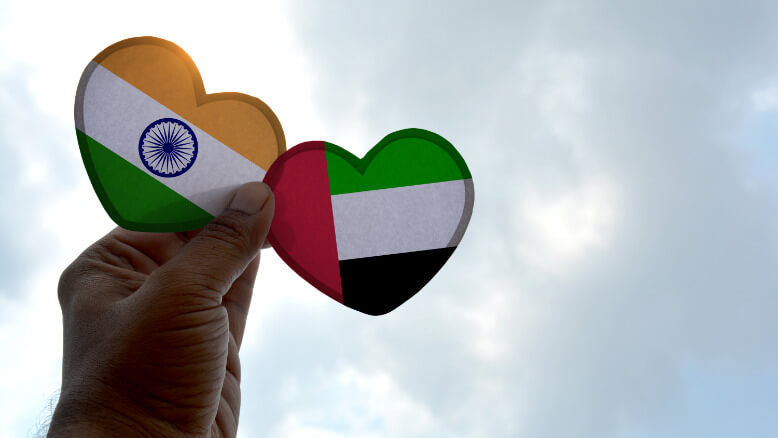
Understanding Bharat Mart.
India’s trade ambitions just got a major boost with the proposed “Bharat Mart” in the United Arab Emirates. This ambitious project, envisioned as a one-stop shop for Indian exports, mirrors China’s successful Dragon Mart and promises to revolutionize how Indian businesses reach global markets.
Why Bharat Mart is a game-changer?
l Unified platform: Imagine a sprawling 100,000 square meter complex housing everything from retail showrooms to warehouses, showcasing Indian products in all their glory. Bharat Mart offers a single destination for international buyers, eliminating the need to scramble through multiple vendors.
l Strategic location: Nestled in Dubai’s Jebel Ali Free Zone, Bharat Mart taps into the UAE’s logistical prowess and acts as a gateway to the Middle East, Africa, and Europe – markets teeming with potential for Indian exporters.
l Efficiency and cost savings: Time and money saved, that’s Bharat Mart’s promise. By streamlining logistics and consolidating operations, Indian businesses can cut down on transportation costs and reach buyers faster.
l Digital edge: Bharat Mart envisions a digital platform alongside the physical facility, allowing global buyers to browse and purchase Indian goods at their fingertips. This omnichannel approach caters to modern buying habits and expands reach even further.
l India-UAE synergy: As part of the ambitious CEPA agreement, India and the UAE aim to double non-oil trade to $100 billion by 2030. Bharat Mart is a powerful tool to achieve this goal, boosting Indian exports and strengthening economic ties.
Beyond the benefits, there are exciting possibilities:
l Brand showcase: Bharat Mart can become a brand recognition hub for Indian companies, enabling them to establish themselves in new markets.
l Job creation: This initiative has the potential to generate employment opportunities in both India and the UAE, benefiting both economies.
l Innovation boost: The sheer scale and focus on efficiency can inspire further innovation in India’s export sector.
While still in its developmental stage, Bharat Mart holds immense promise for businesses in India and in the UAE. It’s a bold step towards claiming a larger share of the global market and a testament to India’s growing ambitions. From perishables to heavy machinery, get ready to see “Made in India” proudly displayed on a global stage.
The Bharat Mart will be a significant step forward in the bilateral trade ties of the nations. And manufacturers and exporters in the UAE and India alike can benefit from access to a bigger and more diversified market, profitable strategic partnerships, and sharing of tech initiatives and innovations. A future focused organization like Moglix with its tech led B2B supply chain ecosystem can play a pivotal
role in welcoming India and the UAE to the next phase of growth. To know more about how Moglix can augment and optimize the procurement process, click here
COP28 Climate Countdown: 1.5°C and Beyond
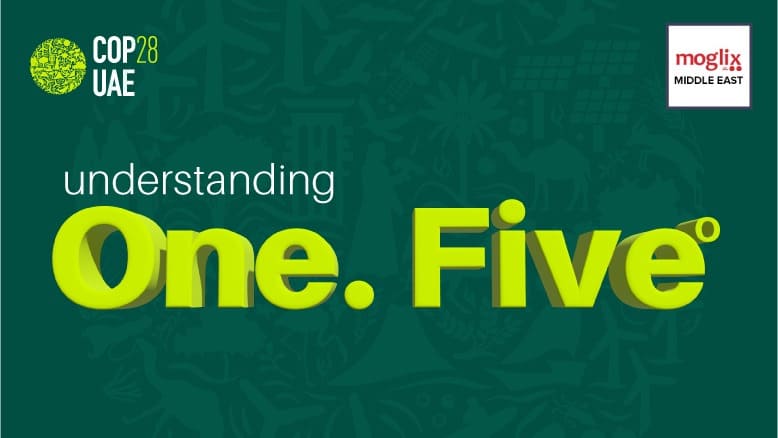
COP28 Climate Countdown: 1.5°C and Beyond
Amidst the global congregation at COP28, a singular figure commands attention—1.5°C. Beyond rhetoric, this term resonates in climate commitments and echoes on the Climate Clock. Unraveling the intricacies of “1.5°C” becomes imperative, exploring its genesis, repercussions, and the quest to achieve this milestone as the climate summit in Dubai looms.
Pinpointing the precise instance of breaching the 1.5°C threshold, as stipulated in the Paris climate accord, emerges as a nuanced quandary. The absence of a universally embraced definition for long-term global warming prompts diverse interpretations, fueling debates on the timeline for surpassing the 1.5°C goal.
While projections hint at an imminent short-term ascent to this temperature rise, potentially within the next few years, the complexities of climate trends, measured over decades, complicate pinpointing the exact breach of the Paris Agreement. Richard Betts of the UK Met Office’s Hadley Centre proposes an innovative strategy—intertwining global temperature observations from the past decade with forecasts for the next ten years. This proposition seeks to establish a universally accepted metric for global warming, potentially galvanizing immediate actions to avert further temperature escalations.
The Unexpected Ambition of 1.5C:
The 1.5C “stretch target” within the Paris Agreement emerged unexpectedly, defying initial expectations. Myles Allen, a professor at the University of Oxford, acknowledges the surprise, emphasizing the ambition of the agreement. Rooted in assessments of climate change impacts at varying warming levels, the 1.5C target gained prominence. Scientific evaluations revealed notable advantages, such as reduced extreme heat and the preservation of crucial polar sea ice, prompting a collective global focus on this ambitious goal.
Setting a Focal Point for Global Action:
Before the Paris Agreement, the world lacked a definitive target to rally around in combating climate change. The adoption of the 1.5C figure marked a pivotal moment in the climate change community. Pauline Dube, an environmental scientist, underscores its significance as a unified global goal, providing a shared direction for concerted efforts to mitigate the impacts of climate change.
For vulnerable regions, notably small islands and low-lying nations, grappling with intensifying storms, rising sea levels, and environmental degradation, the 1.5C scenario remains an existential challenge. Securing adequate loss and damage funding emerges as a pivotal component for the sustained survival and adaptation of these at-risk regions. Beyond current conditions, a 1.5C world confronts heightened risks of extreme heat, amplified stress on food production and water access, and an expanded spectrum of insect-borne diseases like malaria and dengue fever.
Regions like the Arctic, witnessing nearly four times faster warming since 1979, and Africa, experiencing a rapid 0.3C per decade increase between 1991 and 2020, surpassing the global average, exemplify the localized impacts. The timeline for surpassing the 1.5C mark presents intricate projections. The IPCC initially estimated a 50% chance of reaching 1.5C by the mid-2030s. However, recent analyses incorporating updated data suggest a potential earlier milestone, as soon as 2029. The discrepancy between passing 1.5C on individual days, months, and years versus the decadal average adds complexity to the assessment.
Navigating this nuanced landscape, Professor Myles Allen, a lead author on the IPCC report, emphasizes the impracticality of fixating on the precise year of crossing the 1.5C threshold. The intricacies of accurately estimating global temperature changes from decade to decade underscore the need for a holistic understanding rather than fixation on specific timelines. As we grapple with the unfolding climate dynamics, contextualizing these complexities becomes pivotal for informed discourse and strategic decision-making.
The fluidity of estimates regarding when we will breach the critical 1.5C warming mark underscores the intricate interplay of climate policies and evolving scientific analyses. As nations recalibrate their climate strategies, the projected timelines for reaching 1.5C are subject to adjustments. Similarly, refinements in climate models, often fueled by re-analyses of historical climate data, contribute to nuanced alterations in estimates.
A notable instance postdating the IPCC’s 1.5C report involves scientists revisiting the historical climate record. The outcome, revealing a 0.2C increase relative to preindustrial levels, amplifies the urgency of our proximity to the 1.5C threshold. Professor Myles Allen emphasizes that when confronted with such proximity, the inevitability of reaching 1.5C in approximately a decade becomes self-evident.
Delving into the gradations of warming, the distinction between 1.5C and 2C emerges starkly. While the impacts intensify with each degree of warming, the acceleration of impact severity per degree amplifies as temperatures rise. This underscores the pivotal role of incremental temperature changes, elucidated by Allen’s insight into the adaptation of ecosystems and economies to the climate of the late 19th and early 20th Century. As we navigate this intricate terrain, the imperative lies in grasping the cascading consequences of each temperature increment and their profound implications for the world as we know it.
As the specter of overshooting the 1.5C threshold looms, a poignant report unveiled at COP28 by climate and social scientists paints a stark picture of the inevitability of this trajectory. The emphasis lies not only on breaching the 1.5C threshold but also on mitigating the scale and duration of this overshoot, recognizing its profound implications for climate tipping points, vulnerable societies, and the delicate balance of ecosystems and economies.
The report underscores the critical need to comprehend not just whether we surpass 1.5C but the temporal dimensions of dwelling above this critical warming level. Prolonged overshoot intensifies the risk of crossing irreversible climate thresholds, amplifying damage to societies, ecosystems, and economies that bear the brunt of climate vulnerability.
Averting overshoot demands a substantial 43% reduction in emissions compared to 2019 levels, presenting a formidable challenge for global stakeholders. Sir David King, leading the Climate Crisis Advisory Group (CCAG), asserts that while overshoot is undesirable, prompt emission reduction remains the safest recourse. However, acknowledging overshoot as a potential backstop, King highlights the imperative of massive-scale carbon capture technologies, projected to absorb 10 to 15 billion tonnes of carbon dioxide annually. This staggering magnitude, surpassing EU and US emissions, underscores the monumental task ahead.
Crucially, reversing overshoot requires integrating these technologies alongside rigorous emission reduction, emphasizing the urgency of advancing carbon capture on an unprecedented scale. The financial and temporal costs of this endeavor, compounded by the centuries-long recovery period for crucial systems, underscore the imperative of prioritizing proactive measures to sidestep overshoot. As the world grapples with the complexities of climate intervention, the deliberation on avoiding overshoot versus navigating its consequences emerges as a pivotal dialogue in shaping our collective climate destiny.
Amid the labyrinth of climate negotiations at COP28, keen observers are on the lookout for promising indicators that could steer the trajectory toward staying within the 1.5C warming limit. As sustainability enthusiasts, we focus on key markers that reflect a collective commitment to decarbonization and climate justice.
Sir David King, a stalwart in climate diplomacy, places a spotlight on the crucial role of robust leadership from global heavyweights, the United States and China. Highlighting the recent collaborative agreement on climate action between the two nations, King emphasizes the pivotal nature of their strategic approach. A domino effect is anticipated, with the European Union, India, and Brazil potentially joining forces when presented with a compelling strategy.
For Professor Myles Allen, an advocate of positive tipping points, the transformative potential lies in accelerating decarbonization. He pinpoints encouraging shifts in renewable power dynamics and the surging adoption of electric vehicles as beacons signaling a positive tipping point.
Environmental scientist Pauline Dube underscores the urgency of a paradigm shift, acknowledging the profound injustice inherent in climate change, particularly impacting the Global South. Dube stresses the need for an inclusive, whole-society transformation, characterized by fairness, robust support for adaptation, and dedicated funding for climate-vulnerable nations grappling with loss and damage.
As we traverse the intricate landscape of COP28, these signs of progress inspire hope and illuminate the collective journey toward a sustainable, equitable future. The unfolding narrative at the intersection of global leadership, decarbonization milestones, and climate justice narratives forms a tapestry of promise in our pursuit of a 1.5C-resilient world.

